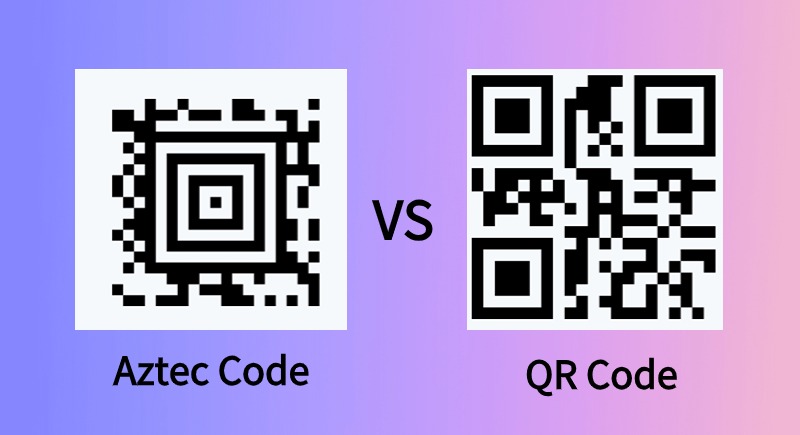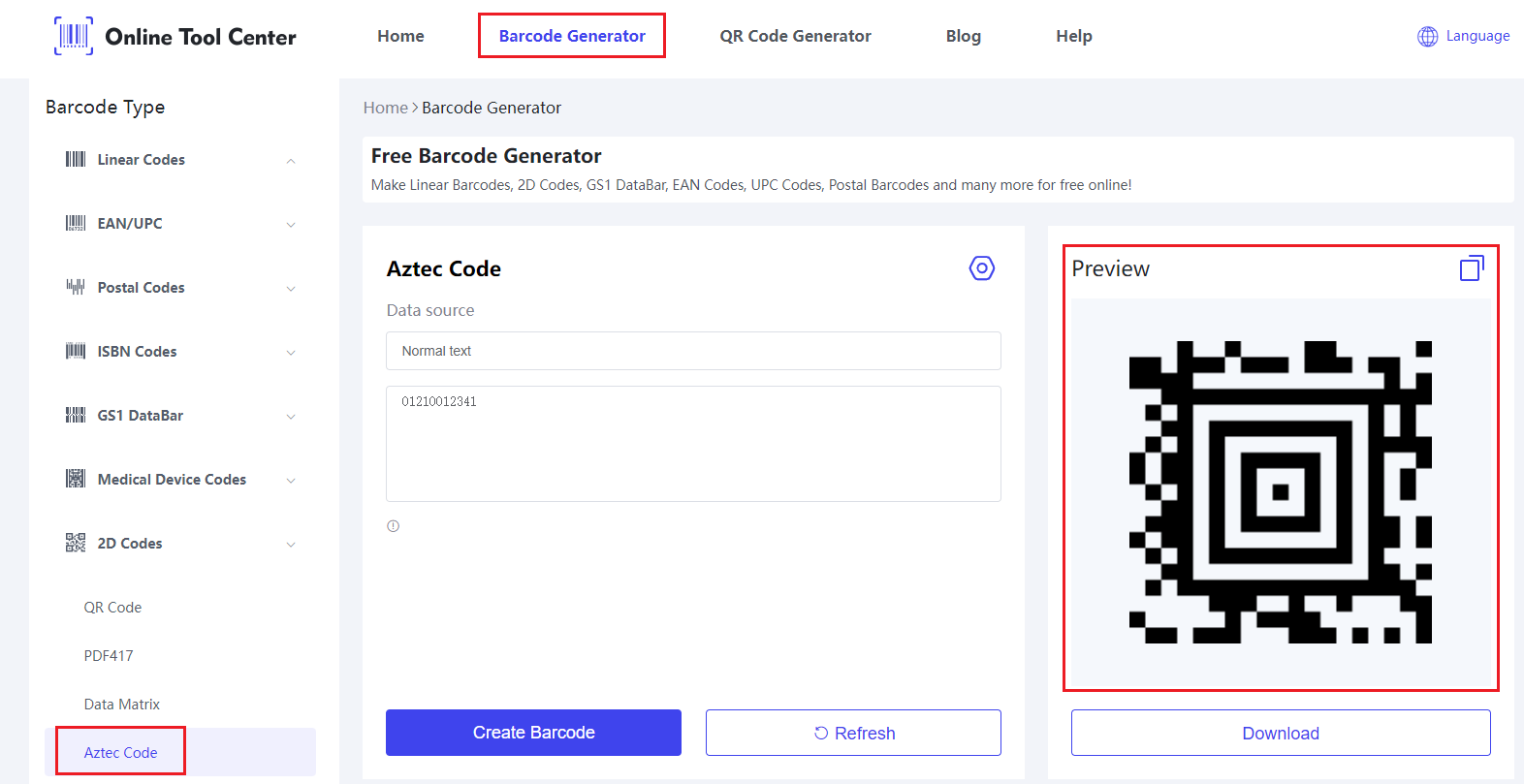What is the Aztec Code?
Aztec Codes are a form of two-dimensional matrix barcodes first developed in the mid-1990s. Unlike traditional barcodes, Aztec Codes are distinguished by their compact, square grid of black and white cells, centered around a distinctive bulls-eye pattern that facilitates quick scanning.
One of their unique features is that they require no quiet zone (a clear margin around the barcode), allowing them to fit into smaller spaces. This makes them ideal for various applications where space is at a premium.
Technical Overview of Aztec Codes
1. Structure
The Aztec Code's structure consists of concentric squares with a central bulls-eye pattern. This configuration is not only visually distinct but also optimizes the barcode for fast recognition by scanners, even under suboptimal conditions.
2. Data Capacity and Error Correction
Aztec Codes can hold a significant amount of data compared to their size, with the capability to store up to 3,832 numeric characters or 3,067 alphabetic characters.
They also feature built-in error correction, which can be set to correct between 5% and 95% of errors. This robust error correction makes them more reliable in environments where barcodes might get dirty or damaged.
3. Encoding and Decoding Process
The encoding process involves converting data into a series of bits that are then mapped into the Aztec Code's grid. Decoding is the reverse process, where scanning devices read the Aztec Code and translate it back into the original data.
Aztec Codes VS QR Codes
What is difference between QR code and Aztec Code?
While both Aztec and QR Codes are popular types of two-dimensional barcodes, they have some distinct differences. Aztec Codes often require less space and can retain more data per unit area. They are particularly noted for their superior error correction capabilities and their ability to be read without a quiet zone, which is mandatory for QR Codes.

Practical Applications of Aztec Codes
Where are Aztec codes used?
1. Transportation
In the transportation industry, Aztec Codes are widely used in electronic boarding passes, particularly because they can be easily scanned from a smartphone screen, facilitating a faster boarding process.
2. Commercial Use
Businesses utilize Aztec Codes for inventory management, ticketing, and mobile payments. Their high data capacity and compact size allow them to store comprehensive information in a small space, streamlining operations.
3. Integration in Systems
Systems like Apple Wallet leverage Aztec Codes to manage secure transactions and ticketing, capitalizing on their ability to store large amounts of encrypted data.
4. Industry Use
In healthcare, Aztec Codes are employed to secure patient records and verify medications, while government agencies use them for document verification, enhancing security and efficiency.
How to Generate Aztec Code?
Here's a simple step-by-step guide to create code Aztec:
Step 1: Select a Free Online Aztec Code Generator
Start by selecting a online Aztec Code generator.
Step 2: Input Data and Create the Code
Enter your information into the Aztec Code generator and create.

Step 3: Customize the Code
Adjust the properties of your Aztec Code to meet specific requirements.
Step 4: Test and Download
It’s essential to test its scan-ability to ensure it accurately represents your data. Use a barcode scanner or a dedicated device to scan the newly created Aztec Code.
Check if the decoded information matches what you entered and then download the image.
FAQs
1. What is the main advantage of using an Aztec Code over a QR Code?
The main advantage is the Aztec Code's efficiency in space usage and its robust error correction, making it ideal for applications where space is limited and durability is required.
2. Can Aztec Codes be customized for specific business needs?
Yes, Aztec Codes can be customized to include various types of data and integrate with business systems for a range of applications.
3. What types of data can be encoded using Aztec Codes?
Aztec Codes can encode text, numeric data, and binary data, making them versatile for different uses.
Aztec Code’s unique features and broad data capacity make them an excellent choice for businesses looking to improve their operational efficiency. For generating custom Aztec Codes that fit your business needs, visit Online Tool Center and explore our user-friendly barcode generator.




